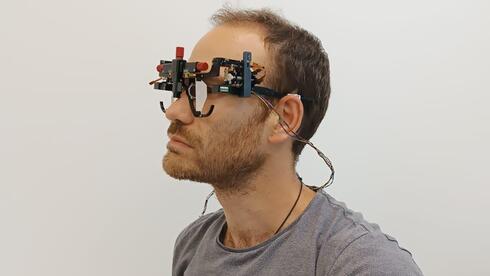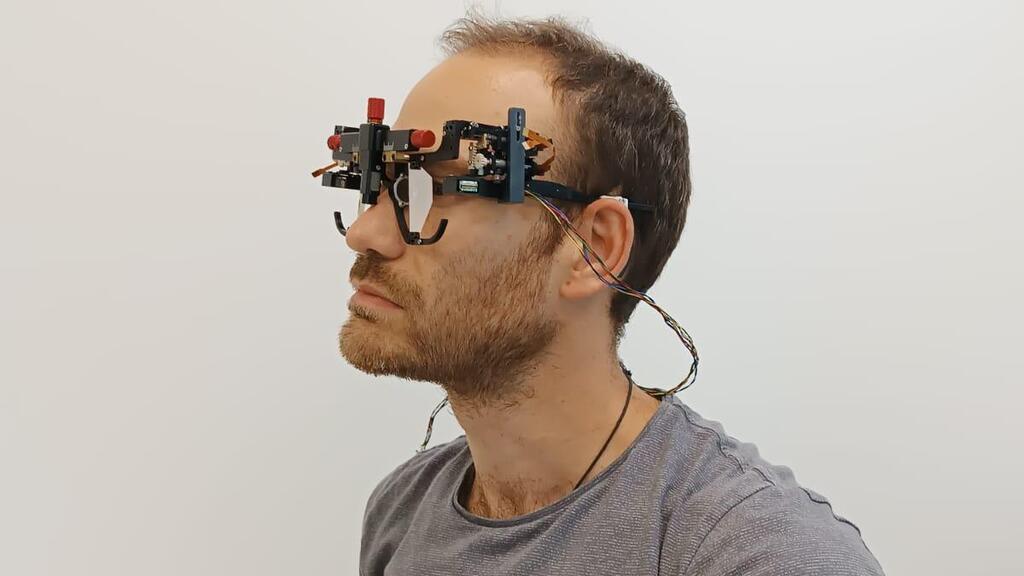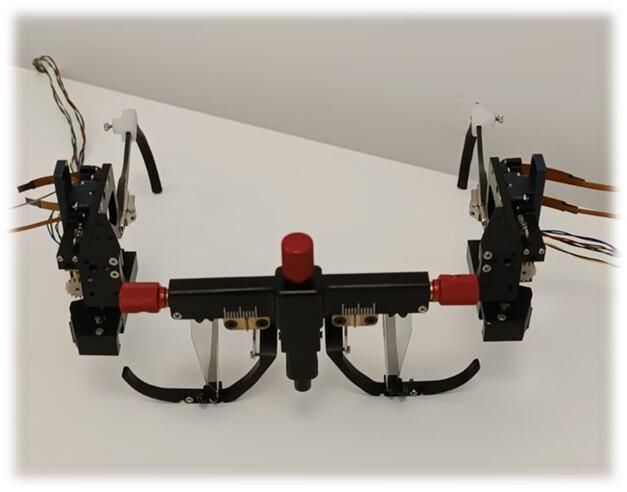
Interview
The eyes have it - EyeJets foresees a screenless future
The Israeli startup is the developer of an innovative technological platform that will enable the projection of digital information directly into the retina, replacing the need for screens. “In a few years there will be no smartphones,” says EyeJets CEO Edu Strul, “only glasses.”
In the 21st century, it’s hard to remember a time before screens, let alone imagine a future without them. Enter EyeJets, an Israeli startup leveraging innovative technology towards a screenless world.
After a long and distinguished career in Israel's Air Force and the defense industry, Edu Strul was consulting for IAI (Israel Aerospace Industries) where he had the opportunity to work with optics expert Dr. Joshua Gur. Upon his retirement, Gur shared some of his ideas with Strul and asked if he would be interested in forming a startup together. This lead to the founding in 2017 of EyeJets, whose name is a combination of the word “eye”, the first initials of the the names of the two co-founders (“j” and “e”), and ‘t’ and ‘s’ is for ‘tracking systems’. Strul serves as CEO, Gur is CTO, and Dr. Isaac Lipshitz, a veteran eye doctor who subsequently joined the team, serves as Chief Medical Officer.
How did your company start?
“At first EyeJets was presented as a military application which involved accurate direction of your pupil,” Strul explained to CTech in an interview. “Then we thought that maybe there are applications for our technology outside the military as well, in the world of smart glasses.”
But smart glasses exist already.
“You are correct. There are a lot of huge companies that tried glasses, but you don’t really see the product today. People are not walking around wearing this technology. Our technology, however, is completely different.”
How so?
“Instead of projecting the digital data from your computer or smartphone onto your glasses’ lenses, we project it directly into your eye’s retina. This is a different concept which was not invented by us, it’s already known.”
So what makes your technology different?
“Normally, if I project data directly into your retina, you won’t be able to see it well because your eye is constantly moving. What we developed is eye tracking technology which follows your pupil, it moves as your eye moves. That means that with our technology the picture, images, or movie, whatever is being projected, will always be in the center of your field of vision. This is our major differentiator.”
How do you know it’s unique?
“Three years ago we applied for a patent in the U.S. in this crowded field which features hundreds, if not thousands, of major companies, but something very unusual happened. We wrote 39 claims and all of them were approved with no exclusions, as is. This is how I know our technology is unique.”
What about the glasses?
“From the very beginning, we have been in contact with the leading eyeglass company who told us that our technology must be manufactured with the nicest glasses on the market - and we agree. So in addition to the projection and the eye tracking, we want our technology to be built into nice eyeglasses that you can wear as you walk on the street and go about your day. With other existing products, including the best AR glasses, you must be sitting down to see whatever is being projected on your glasses. With EyeJets, it will almost be like regular glasses that you can wear everywhere and anywhere, even on the go.”
Do you believe your technology will supplement screens or completely replace them?
“We are working towards being screenless. There will be no screens, but I am dividing it into two phases. The first stage, which I explained before, is projection with eye tracking. We are trying to get this technology to market quickly, which we call “EyeVis1”. This technology will eventually replace your TV screen and computer screen, but you will still need a smartphone, because your mobile phone has a very good processor built in and that has a lot of applications. Currently we have a model for demonstration which works and proves the technology.
"But, the big idea, the next product, the second phase which will take more time, is to completely replace the smartphone. The more complicated part involves if you want to type something. So we also own the patent on a virtual keyboard. That means that if you get an email or a WhatsApp message and you want to reply to it immediately while wearing our glasses, you will see the keyboard and you will type with your fingers in the air. Eventually, in a few years down the road from now, there will be no smartphones, only glasses.
“We realize that as a small company we cannot beat the giant companies out there like Google, Facebook-Meta, etc., but we, with our unique technology, hope to partner with them. As the old saying goes, ‘if you can’t beat them, join them’ - and we hope to join them. One of the Big 5 or FAANG (Facebook, Amazon, Apple, Netflix, Google) companies has already been in intensive talks with us over the last couple of months and they were very impressed with our technology and we have a signed an NDA between us, so we hope we will have a big announcement regarding that soon, by the end of this year.”
You are talking about projecting lasers into peoples’ retinas, is it safe?
“Yes, that’s exactly what we are doing. When we first established the company, back when it was strictly for the military, that was the very first question asked, ‘Is it safe?’
"First of all, there are established standards, which I am very familiar with, based on a large American study, for projection lasers. Projecting into the retina has already been used in military and medical applications, and we are significantly below the number of the figures of that standard, so yes, it is safe.”
What about medical applications?
“For the world of medicine it’s amazing. As I said before, our technology does eye tracking. We are continuously scanning the retina. What do we have in the retina? Blood vessels. The retina is the only place in our body where our blood vessels are exposed, where you can see them. There are many diseases, such as diabetes, glaucoma, etc. which are normally tested with blood tests, but it’s known that once someone is sick there is a change in the blood vessels. So, instead of waiting till someone feels ill, our technology acts as an early diagnosis. So, when you wear our special glasses for say 1 or 2 hours a day, as it accumulates data, it provides an early diagnosis and tells you it’s time to go see your doctor.
“But, having said that, we are still a small company and we need to focus, so right now we are not yet focusing on the medical side, but hopefully in the future we will.”
What about funding?
“We have received financial support in the form of grants from the Israel Innovation Authority, twice. In addition, in 2021 the company raised funds in a crowdfunding process through the Piplebiz platform we are in the process of doing that again via that same platform. We are also now preparing for the largest AR/VR convention next month in Portugal where we will be presenting our technology to the world for the first time and meeting with international investors and soon after this conference we intend to announce our Series A funding round.”
Would you say that EyeJets is a pioneer in the field?
“Absolutely we are pioneers. First of all, we are very proud to be an Israeli company. Also, although I have a military background, from years of being an engineer in Israel's Air Force, we are not a typical Israeli startup of youngsters fresh out of the 8200 intelligence units of the IDF. I am 56-years-old and I am the youngest of the founding group. My partners are all older than I am. We are a small company, but we have lots of experience and know-how and are proud to bring this unique Israeli technology to the world which we believe is going to change the way we look at the world. We have been preparing for this all our lives.”















